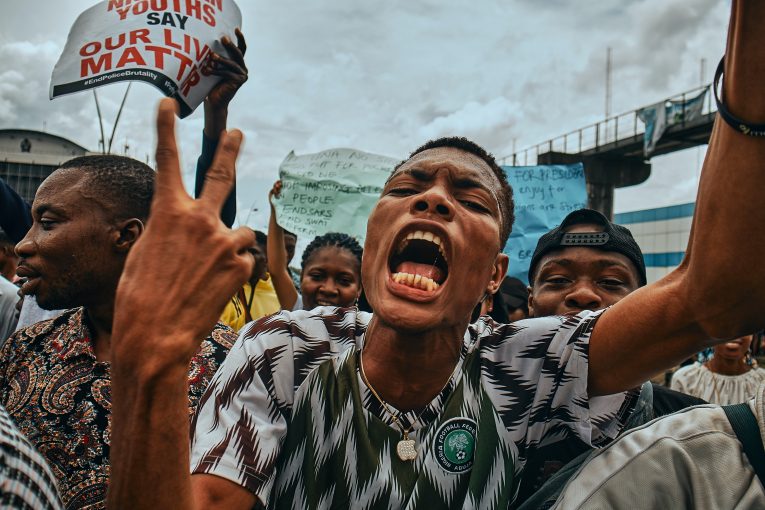
How lawmakers miscount incarcerated people on the census and distort ballots
By Sam McCann
When voters across the United States go to the polls, they believe their choice will come down to who will represent their communities best. But what they might not know is that, in some parts of the country, their candidates will represent districts that include people whose homes are far away—and who might not have any choice in the matter.
In the vast majority of states, voters will be casting their ballots in legislative maps misshapen—sometimes dramatically—by prison gerrymandering, the practice of counting incarcerated people where they are detained, rather than in their actual homes. This method has been used since the first U.S. census in 1790. While this practice has always been unjust, the explosion of racialized mass incarceration over the past decades has  exacerbated its impact.
exacerbated its impact.
To confront the issue, lawmakers and organizers across the country are slowly chipping away at prison gerrymandering’s wide reach.
This year, for example, people in Montana are finally voting in districts that reflect the state’s population, not its prison geography. In February 2023, the state’s Districting and Apportionment Commission approved, with bipartisan consensus, new maps that count incarcerated people in the districts they actually live in, not the ones in which they are imprisoned. The bill, signed into law by Governor Greg Gianforte in April, made Montana the 13th state to end prison gerrymandering.
Soon after, Governor Janet Mills of Maine signed a new law designed to end the miscounting of incarcerated people in the next census. And in April, four U.S. congressmembers introduced the End Prison Gerrymandering Act, federal legislation that would force the Census Bureau to correctly count incarcerated people in their home districts.
Ending prison gerrymandering makes sense on a basic level. People held in prisons are not “residents” of the prison in which they are forced to live; they lack the economic and political ties to the area that would make them a community member. And, in 48 states, people held in prison cannot vote, giving them limited leverage to make their voice heard to the people who represent the district where they are incarcerated.
Compounding racial injustice
Counting incarcerated people incorrectly in the districts in which they are detained, rather than the ones where their home is, compounds racial injustice. Black and Latino people make up 56 percent of the U.S. prison population, despite constituting only 32 percent of the population at large. Yet, they are held in prisons that are disproportionately built in predominately white areas. For instance, the Prison Policy Initiative found that, in New York in 2005, 92 percent of prison cells were in disproportionately white legislative districts (New York ended prison gerrymandering in 2010). In Montana, Indigenous Americans were leaders in the fight to end prison gerrymandering, in part because they represent nearly a quarter of the state’s prison population but just six percent of its general population.
The miscount caused by prison gerrymandering disrupts our democracy. Because local, state, and federal representatives are allocated based on population, counting incarcerated people—who are mostly Black and Latino—in disproportionately white districts means that constituents who live near a prison enjoy outsized political influence. In essence, prison gerrymandering artificially inflates populations near the prison with people who do not get to vote—at the direct expense of the electoral power of communities targeted by mass incarceration. It’s a dynamic some have likened to the Three-Fifths Compromise, which allowed Southern states to count enslaved Black people toward their population in the House of Representatives while continuing to enslave and disenfranchise them.
This unfair political influence creates a stubborn cycle. The racial disparity in the national prison population is a product of policing and prosecution practices that codify racism. Prison gerrymandering disenfranchises the very populations directly impacted by those decisions, while giving more power to others.
The impact is pronounced enough to shift the balance of power in legislatures. In 2019, researchers at Villanova University’s Department of Sociology and Criminology estimated that not correctly counting 100,000 incarcerated Black people from Philadelphia cost the city two majority-minority districts in Pennsylvania’s state legislature. While the state rolled back some prison gerrymandering practices in 2021, it still left carve-outs in place.
Despite the dire impact of prison gerrymandering, the fact that more and more states are reckoning with it is hopeful. Michigan is considering a bill that would make it the 15th state in the country to end prison gerrymandering, and more than 200 local jurisdictions have already acted to stop the practice. In the absence of federal legislation, dismantling prison gerrymandering jurisdiction-by-jurisdiction has been a slow but needed path forward.
Counting incarcerated people as residents of their own communities is an incredibly popular, commonsense move. In 2016, the Census Bureau solicited public comment on whether to end the practice. It received nearly 80,000 comments, 99 percent of which supported the change. Congress should seize on this popular support and pass the End Prison Gerrymandering Act to end prison gerrymandering, once and for all.
Originally published by Vera Institute of Justice.

